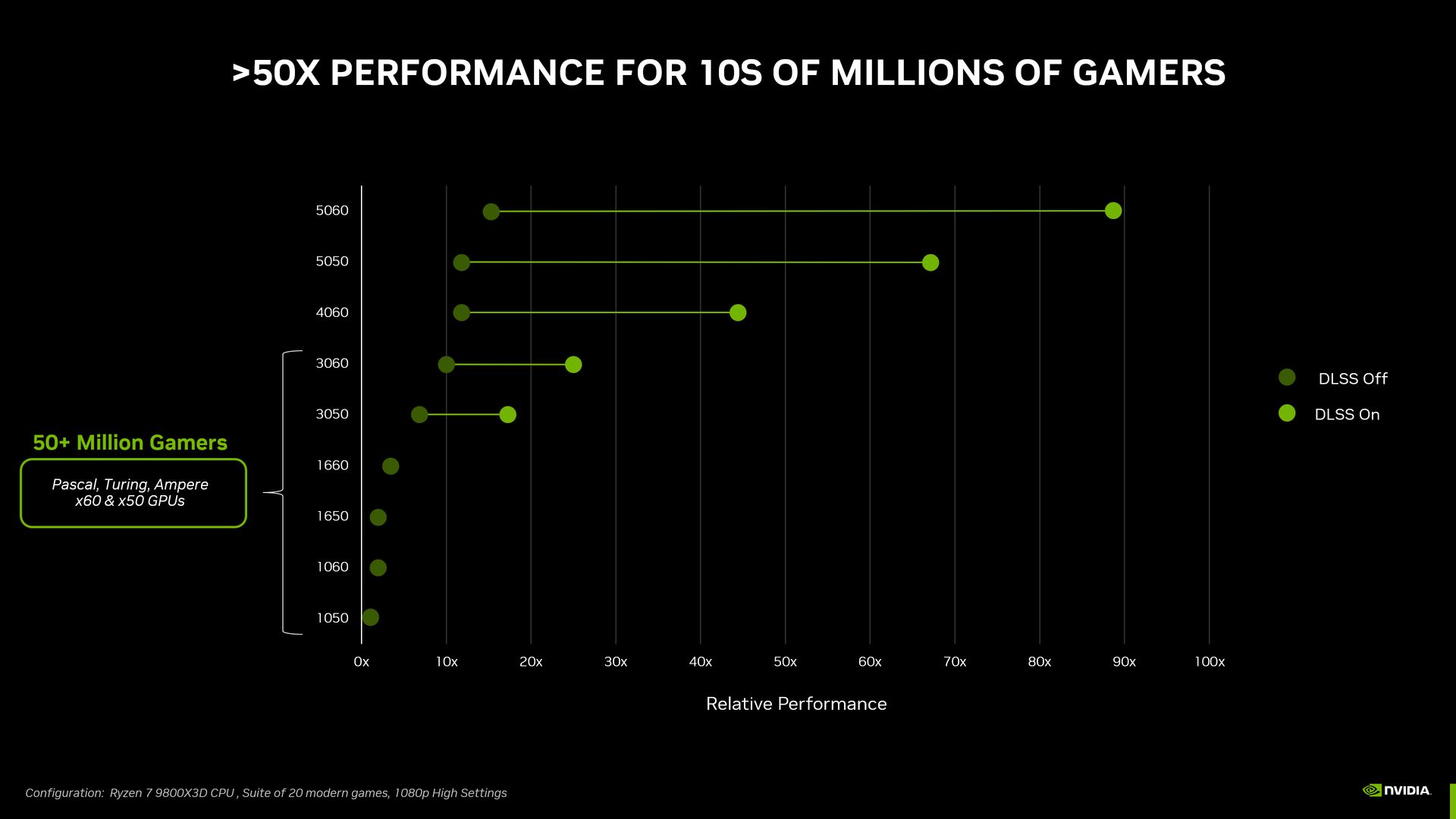Can new $249 Nvidia RTX 5050 actually game well?

Nvidia announced the GeForce RTX 5050, a new graphics card, which will be available in the second half of July 2025, starting at $249.
The GeForce RTX 5050 incorporates the new GB207 die, which is based on the Blackwell architecture. This die features 2560 CUDA cores. The RTX 5050 also includes 5th generation Tensor cores and 4th generation RT cores, consistent with other cards in the 50-series. These core technologies support features such as DLSS4, which includes multi-frame generation capabilities, and the forthcoming Reflex 2.
 Image: Nvidia
Image: Nvidia
The GPU within the RTX 5050 operates at a base clock speed of 2.31GHz and can boost up to 2.57GHz. It is equipped with 8GB of GDDR6 memory, connected via a 128-bit interface. This configuration distinguishes it as the only 50-series card released thus far that does not utilize GDDR7 memory.
 Image: Nvidia
Image: Nvidia
Connectivity options for the RTX 5050 include three DisplayPort 2.1b outputs and one HDMI 2.1b output. The card integrates a 9th generation NVENC encoder and a 6th generation NVDEC decoder. Its power consumption is rated at 130W. Power delivery can be managed through a single 8-pin connector or a PCIe Gen 5 cable providing 300W or greater power.
 Image: Nvidia
Image: Nvidia
Nvidia has indicated that the RTX 5050 demonstrates a 60% average performance increase in rasterization compared to the RTX 3050. Performance metrics suggest the RTX 5050 is comparable to the RTX 4060. The RTX 5050 will not be offered in a Founders Edition model from Nvidia. However, it will be available through major board partners including ASUS, Colorful, Gainward, Galaxy, GIGABYTE, INNO3D, MSI, Palit, PNY, and ZOTAC.
A mobile variant of the RTX 5050 is currently shipping within laptops, with prices for these systems beginning at $999.
